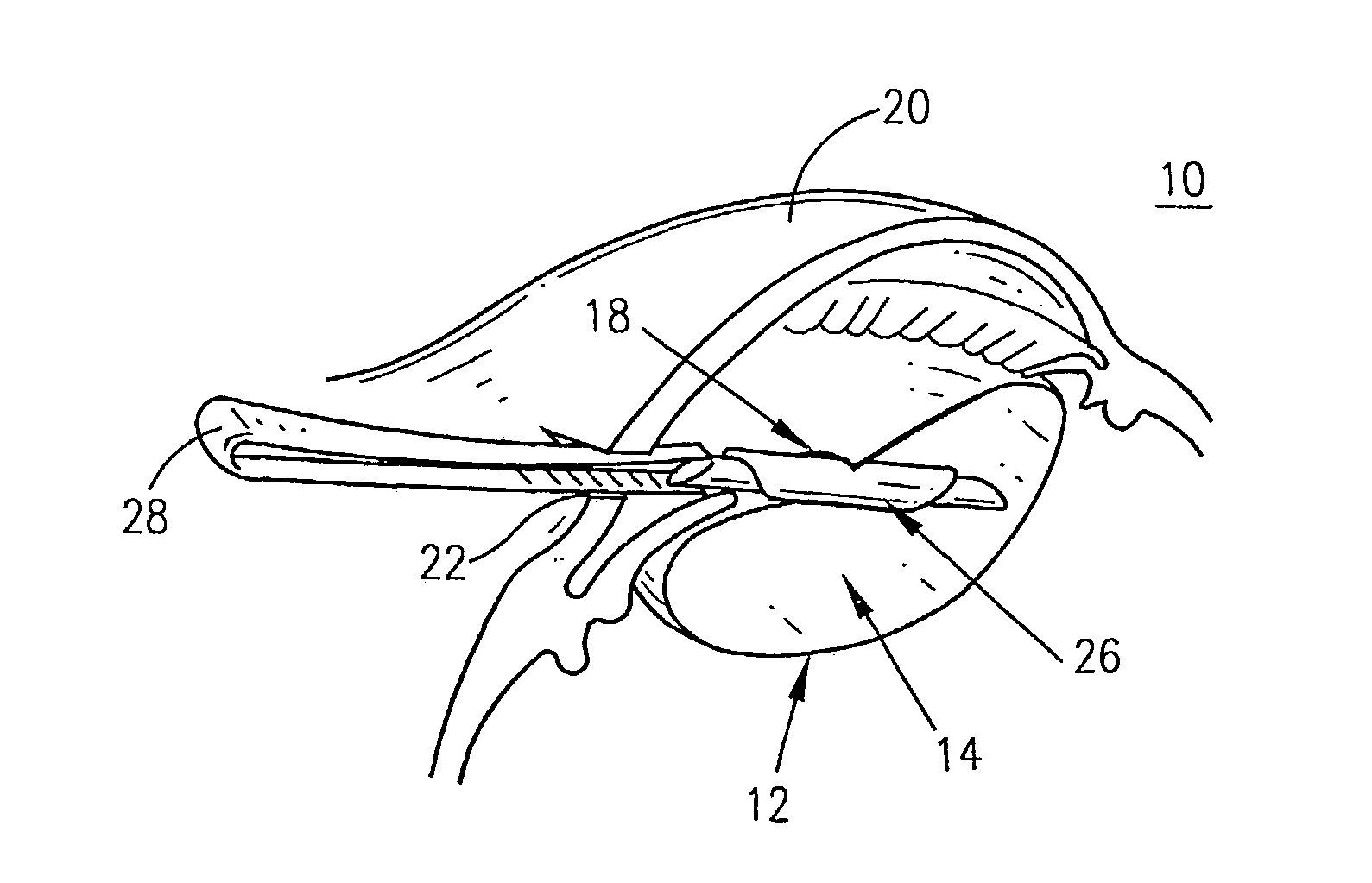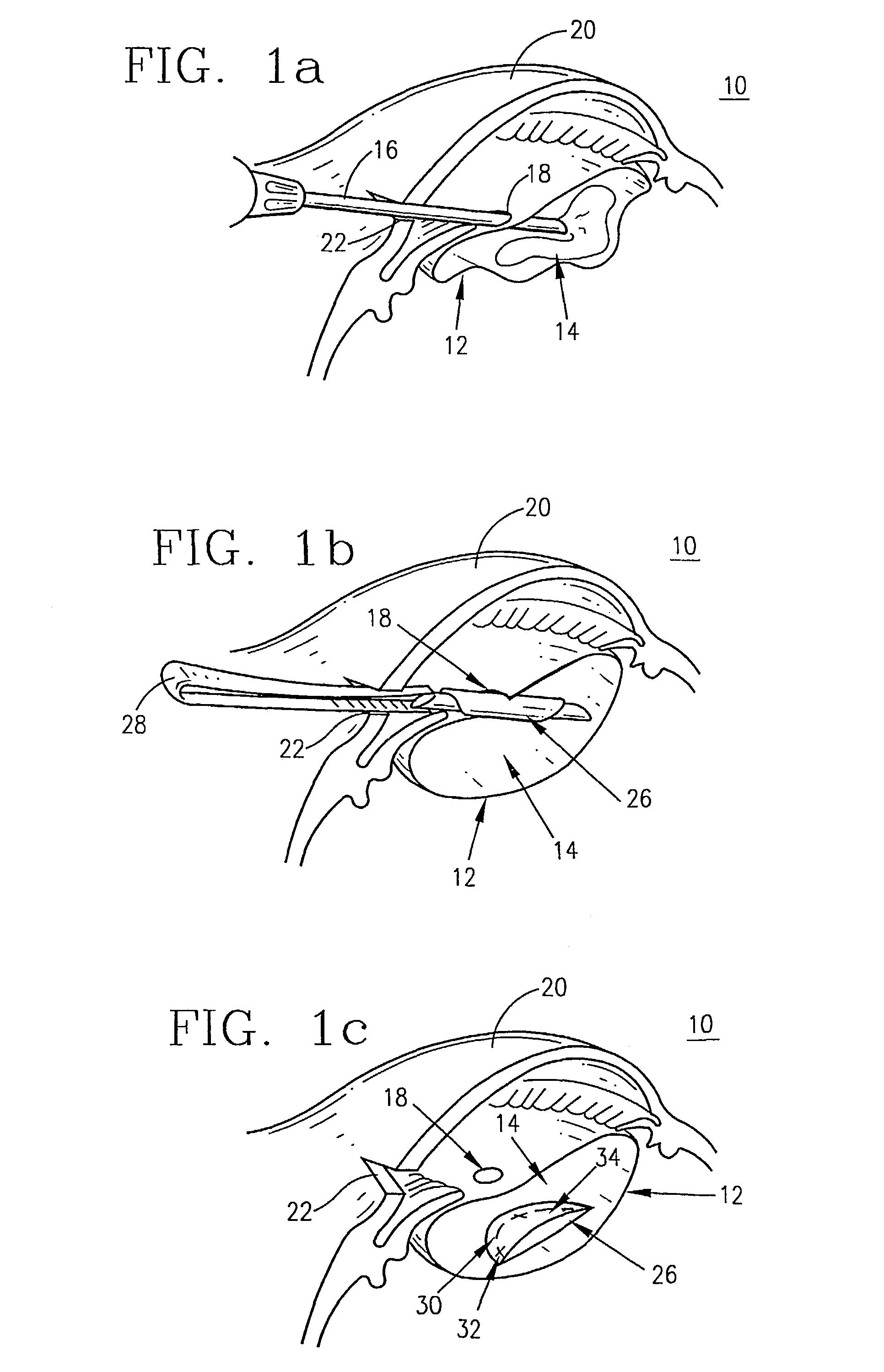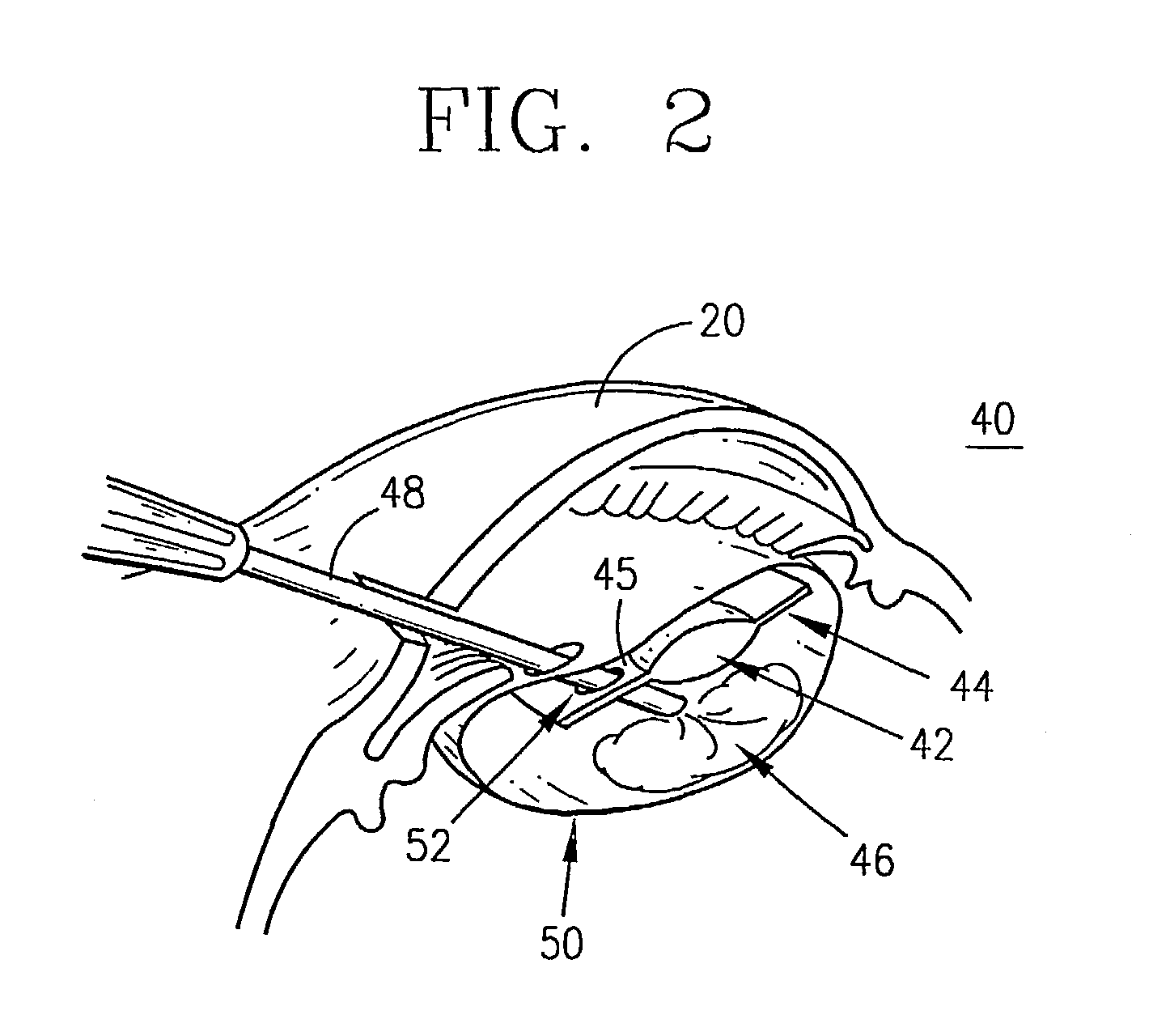Supplementary endo-capsular lens and method of implantation
a technology of endocapsular lens and supplementary lens, which is applied in the field of surgical techniques, can solve the problems of static refracting power, reduced contrast of the focused part of the image, and reduced the ability of the eye to obtain good resolution for all viewing distances, and achieve the effect of increasing the accommodative capacity of the ey
- Summary
- Abstract
- Description
- Claims
- Application Information
AI Technical Summary
Benefits of technology
Problems solved by technology
Method used
Image
Examples
example 1
Method for Implantation of a SECL in the Lens Capsule and Lens Refilling Procedure (phaco-erzatz)
[0090]Dilation drops Mydriacyl 0.5% in the amount of 1 drop in each eye were added. Five (5) minutes later 1 drop in each was added of 1% atropine sulfate. The eye was then anesthetized with 35 mg / kg of ketamine and 5 mg / kg of xylazine with 0.75 mg / kg of acepromazine. After preparing the subject for surgery in aseptic conditions an eyelid speculum was inserted. A two step incision was made at the corneal periphery (1.5 mm in width). A mini-capsulorhexis was made (0.8–1.2 mm diameter). The lens material was aspirated. A cannula was then inserted (loaded with a pre-rolled SECL) through the mini-capsulorhexis into the lens capsule and disengaged from the cannula. The SECL then unfolded. A mini-capsulorhexis valve (MCV) was then placed across the capsule opening. A polymeric gel was then injected from a cannula through the capsulorhexis and into the lens capsule. When necessary, the gel was ...
example 2
In-Vitro Method for Verifying the Efficacy of a SECL in Correcting Ametropia Without Significantly Degrading the Accommodative Amplitude
[0091]The instructions outlined in this Example present one method by which the optical efficacy of a SECL may be demonstrated in situ. It is understood that a wide range of optometric measurement methods may be used for the same purposes. The method described here is chosen as it involves only simple componentries.
[0092]A working SECL would typically have a diameter sufficiently large to cover the entire pupil of the eye in most illumination conditions. Further, individual eyes would differ in their amount of ametropia. Given these two constraints, it is extremely difficult and certainly impractical to demonstrate the difference in optical performance (refraction and accommodation) of a post-ersatz lens against a post-ersatz lens which also has had a SECL implant.
[0093]Therefore the simplest demonstration of a SECL's optical performance is by using...
PUM
| Property | Measurement | Unit |
|---|---|---|
| diameter | aaaaa | aaaaa |
| specific gravity | aaaaa | aaaaa |
| specific gravity | aaaaa | aaaaa |
Abstract
Description
Claims
Application Information
 Login to View More
Login to View More - R&D
- Intellectual Property
- Life Sciences
- Materials
- Tech Scout
- Unparalleled Data Quality
- Higher Quality Content
- 60% Fewer Hallucinations
Browse by: Latest US Patents, China's latest patents, Technical Efficacy Thesaurus, Application Domain, Technology Topic, Popular Technical Reports.
© 2025 PatSnap. All rights reserved.Legal|Privacy policy|Modern Slavery Act Transparency Statement|Sitemap|About US| Contact US: help@patsnap.com



